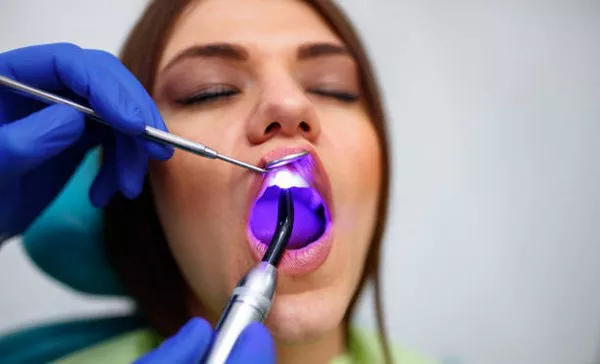To comprehend why teeth may appear yellow and transparent, it’s essential to grasp the intricate structure of teeth. Teeth consist of multiple layers, with enamel serving as the semi-transparent outer covering that protects the underlying dentin. Enamel is the hardest substance in the human body and plays a vital role in safeguarding teeth from damage and decay. Beneath the enamel lies the dentin, a yellowish tissue that comprises the bulk of the tooth structure.
Causes of Discoloration and Transparency
Several factors can contribute to the yellowing and transparency of teeth, with enamel erosion being a primary culprit. Enamel erosion can occur due to various reasons, including consumption of acidic foods and beverages, such as citrus fruits, sodas, and sports drinks. Prolonged exposure to acidic substances can gradually wear down the enamel, making the underlying dentin more visible and causing the teeth to appear yellow and translucent.
Additionally, certain medical conditions, such as celiac disease, can affect tooth enamel and lead to discoloration and transparency. Celiac disease is an autoimmune disorder characterized by intolerance to gluten, a protein found in wheat, barley, and rye. Individuals with celiac disease may experience enamel defects known as enamel hypoplasia, where the enamel layer is thin or incomplete, resulting in increased transparency and susceptibility to damage.
Genetic factors can also influence tooth appearance, with conditions like enamel hypoplasia being hereditary. In enamel hypoplasia, the enamel layer fails to develop properly, leaving the underlying dentin more exposed and visible. This genetic predisposition can contribute to both yellowing and transparency of teeth, impacting their overall appearance and structural integrity.
Symptoms and Diagnosis
Translucent teeth may present with various symptoms, including increased sensitivity to hot, cold, or sweet foods and beverages, as well as changes in tooth color and texture. However, these symptoms may not always be immediately apparent, making professional diagnosis essential for identifying the underlying cause.
Dentists utilize various diagnostic tools and techniques to assess tooth health and identify potential issues. Visual examination, dental X-rays, and tests for enamel thickness and density can help pinpoint the cause of tooth transparency and guide appropriate treatment decisions. Early detection and diagnosis are crucial for addressing translucent teeth effectively and preventing further damage.
see also: Does gingivitis cause tooth sensitivity?
Prevention Tips
Preventing further enamel erosion is key to preserving tooth structure and minimizing yellowing and transparency. Adopting a tooth-friendly diet that limits acidic foods and beverages can help reduce enamel erosion and protect teeth from damage. Consuming calcium-rich foods, such as dairy products and leafy greens, can strengthen enamel and promote overall dental health.
Practicing good oral hygiene habits, including regular brushing with fluoride toothpaste and flossing daily, is essential for maintaining enamel integrity and preventing decay. Dentists recommend using a soft-bristled toothbrush and avoiding aggressive brushing techniques that can contribute to enamel wear. Additionally, using fluoride mouthwash and attending regular dental check-ups can help monitor tooth health and address any issues before they escalate.
see also: Which Toothpaste Is Best For Yellow Teeth In India
Treatment Options
When it comes to treating translucent teeth, several options are available, depending on the severity and underlying cause of the condition. Dental veneers, thin shells made of porcelain or composite resin, can be bonded to the front surface of teeth to improve their appearance and conceal discoloration and transparency. Veneers are custom-made to match the natural color and shape of the teeth, providing a durable and aesthetically pleasing solution.
Another treatment option for translucent teeth is dental bonding, where a tooth-colored resin material is applied to the affected teeth and sculpted to achieve the desired shape and color. Bonding can effectively mask discoloration and improve tooth appearance, offering a less invasive and more affordable alternative to veneers.
Long-term Management
Managing translucent teeth in the long term requires ongoing dental care and maintenance to preserve tooth health and appearance. Regular dental check-ups and cleanings are essential for monitoring enamel integrity and addressing any issues promptly. Dentists may recommend fluoride treatments or dental sealants to strengthen enamel and protect against further erosion.
Lifestyle adjustments, such as avoiding acidic foods and beverages and practicing good oral hygiene, can help prevent enamel erosion and maintain tooth structure. Additionally, individuals with genetic conditions like enamel hypoplasia may benefit from genetic counseling and specialized dental care to manage their condition effectively.
Conclusion
Understanding the causes and treatment options for translucent teeth is essential for maintaining optimal dental health and preserving tooth appearance. By adopting preventive measures, seeking timely diagnosis and treatment, and practicing good oral hygiene habits, individuals can mitigate the effects of enamel erosion and enjoy a healthy, radiant smile for years to come.
You Might Be Interested In
































